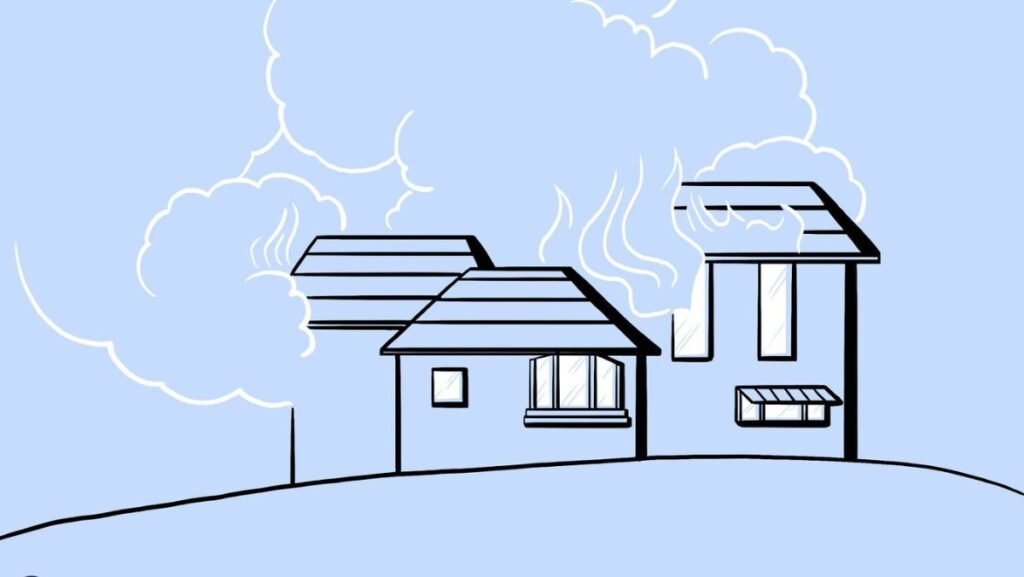Home insurance, commonly referred to as homeowner’s insurance, is a requirement, not an extravagance. That goes beyond merely shielding your house and belongings from harm or theft. We’ll go over the fundamentals of homeowners insurance coverage in this article.
A mortgage company will almost always not make a loan or finance a residential real estate transaction without proof of insurance coverage for the full or fair value of the property, which is typically the purchase price. If your home is destroyed while you have a mortgage, the lender will be compensated through the mortgagee clause in your homeowner’s insurance.
To need insurance, you don’t even need to be a homeowner. A lot of landlords demand that their occupants carry renter’s insurance. This kind of protection is wise to have whether it’s necessary or not.

What a Homeowner’s Policy Provides
A homeowner’s insurance policy has certain standard elements that specify what costs the insurer will cover, despite the fact that they are infinitely customizable. The discussion of each of the primary coverage areas follows.
Damage to the Interior or Exterior of Your House
Your insurer will pay to have your house repaired or even rebuilt if it sustains damage from vandalism, lightning, hurricanes, fire, or other covered disasters. In general, damage or mutilation caused by earthquakes, floods, and inadequate home maintenance is not covered, and if you desire that kind of protection, you might need to purchase additional riders. The same rules that apply to the main house may also need to be applied separately to any detached garages, sheds, or other structures on the property.
If your home’s contents—including clothing, furniture, appliances, and most other items—are destroyed in an insured disaster, you are covered. Even “off-premises” coverage is available, so you could file a claim for misplaced jewelry, for example, no matter where you were in the globe. However, the maximum amount that your insurer will pay you back might exist. The majority of insurance providers will pay between 50% and 70% of your total insurance coverage for your home’s structure, according to the Insurance Information Institute.
Your belongings could be insured for up to $140,000, for instance, if your home is insured for $200,000.
Personal Liability for Damage or Injuries
You are shielded from third-party lawsuits by liability coverage. Your pets are even covered by this clause! Therefore, your insurance will cover Doris’s medical costs if your dog bites her, whether it happens at your house or at hers. Alternatively, you can file a claim to reimburse her if your child breaks her Ming vase. You will probably also be covered if Doris trips over the broken vase pieces and sues for pain and suffering or lost wages. This is similar to what would happen if someone had been hurt on your property.
The Insurance Information Institute states that although policies can provide as little as $100,000 in coverage, experts advise having at least $300,000 in coverage. You can purchase an umbrella policy that will provide you with an additional $1 million or more in protection for a few hundred dollars more in premiums.
Hotel or House Rental While Your Home Is Being Rebuilt or Repaired
Though unlikely, it will surely be the best coverage you have ever bought if you are forced to temporarily leave your home. The additional living expenses portion of your insurance would pay for your rent, lodging, meals out, and other unforeseen expenses you have while you wait for your house to be livable again. But be aware that policies impose stringent daily and total limits before you reserve a suite at the Ritz-Carlton and order caviar from room service. Of course, if you’re willing to pay more for coverage, you can increase those daily limits.

Different Types of Homeowners Coverage
There is no doubt that not all insurance is made equal. You will probably receive the least amount of coverage from the least expensive homeowners insurance, and vice versa.
HO-1 through HO-8 are the industry-standard forms of homeowners insurance available in the United States that provide varying degrees of protection based on the needs of the homeowner and the type of residence being covered.
In essence, there are three coverage tiers.
Actual Cash Value
The cost of the house plus the value of your possessions after deducting depreciation is known as the actual cash value, or ACV (a.k.a. how much the items are currently worth, not how much you paid for them). A recoverable depreciation clause, which enables the owners to claim the value of the depreciation in addition to the ACV, may be present in some policies.
Replacement Cost
You could rebuild or repair your home to its original value if you had replacement value insurance, which pays the full cash value of your assets and house without depreciation.
Guaranteed (or Extended) Replacement Cost/Value
The most extensive, this inflation-buffer policy covers the full cost of rebuilding or repairing your house, even if the amount exceeds your policy limit. An extended replacement, which provides more coverage than you bought but has a cap (usually 20% to 25% higher than the limit), is something that some insurers offer.
Certain advisors believe that all homeowners should purchase guaranteed replacement value policies because you need more insurance than just enough to cover the market value of your house; you need enough insurance to rebuild your house, ideally at the current market value, which has likely increased since you built or bought it. Policies with guaranteed replacement value will cover the higher replacement costs and give the homeowner a safety net in the event that building costs rise.
What Isn’t Covered by Homeowners Insurance?
Policies for homeowners’ insurance usually cover a broad range of risks and occurrences that could harm your house or possessions. There are, nevertheless, a number of frequent exclusions, or circumstances or occurrences that are not covered by the normal policy. You will probably need to purchase additional or private coverage if you wish to be covered for many of these particular items.
Numerous natural disasters occur that are not covered by regular insurance. Flood damage is typically not covered by standard homeowners insurance. Generally speaking, standard homeowners insurance policies do not cover earthquake damage. Large-scale or progressive sinkhole damage is frequently not covered by policies, even though some have restricted coverage for unintentional and sudden sinkhole damage.
Certain costs related to home maintenance and repairs are not covered. Damage from drain or sewer backups is often excluded by standard policies. In general, coverage does not extend to replacements or repairs resulting from routine use. In addition, damage from mold, mildew, termites, rats, and other pests might not be included, particularly if preventative measures are not followed.
Finally, a great deal of acts do not qualify as coverage. Damage from nuclear accidents or radiation is typically not covered by standard homeowners insurance policies, nor is damage resulting from acts of war, terrorism, or civil unrest. It is unlikely that your insurance policy will cover you if you purposefully cause damage to your own property. Furthermore, following a covered loss, the additional expenses associated with rebuilding or repairing your home to conform to new building codes or laws may not be entirely covered by a standard policy.

